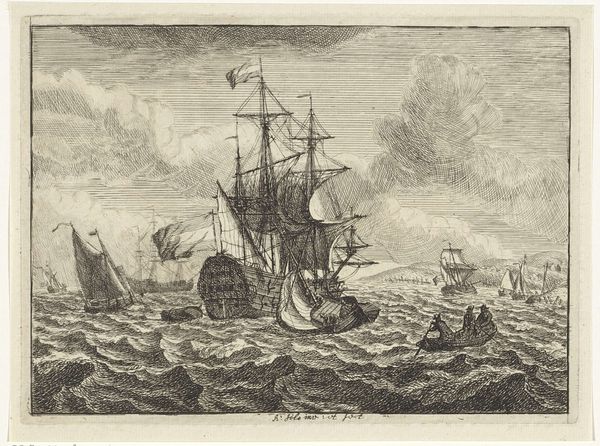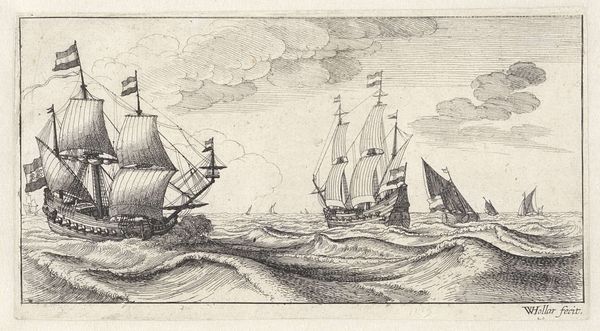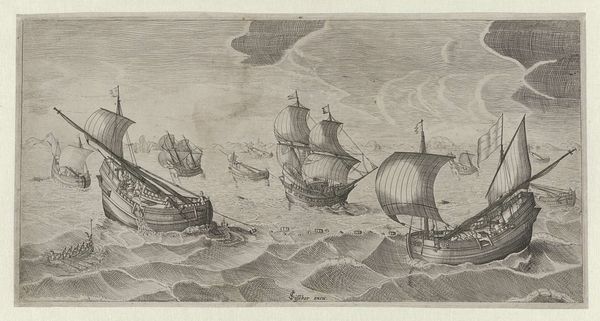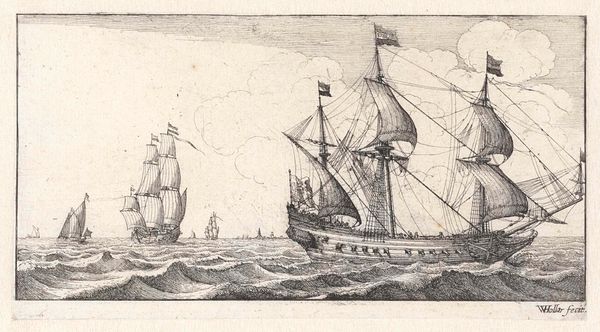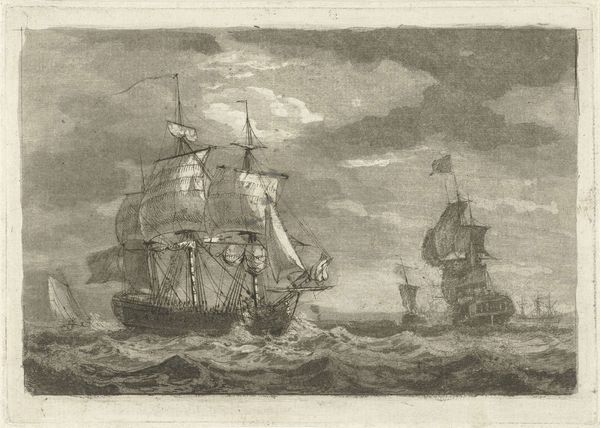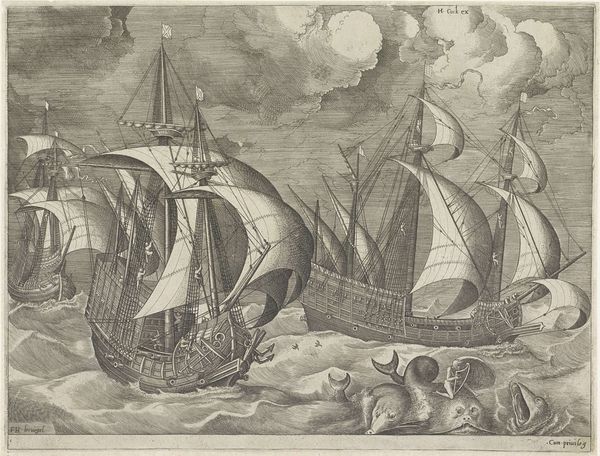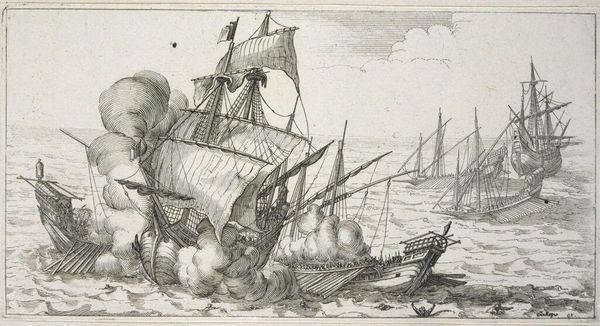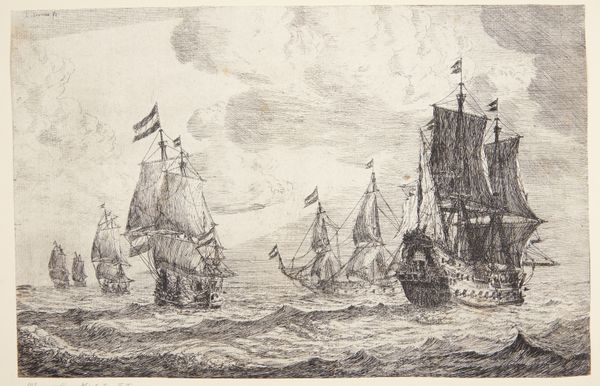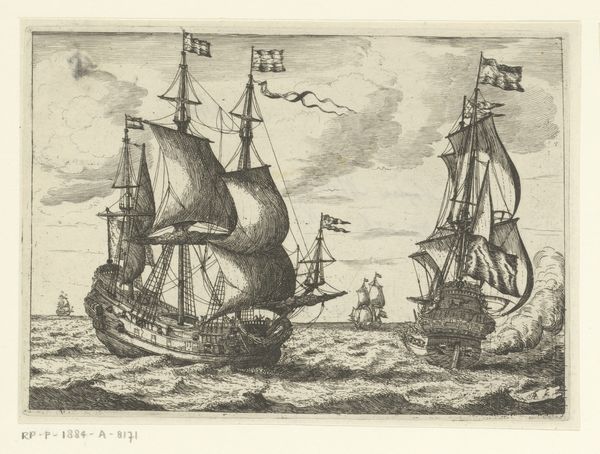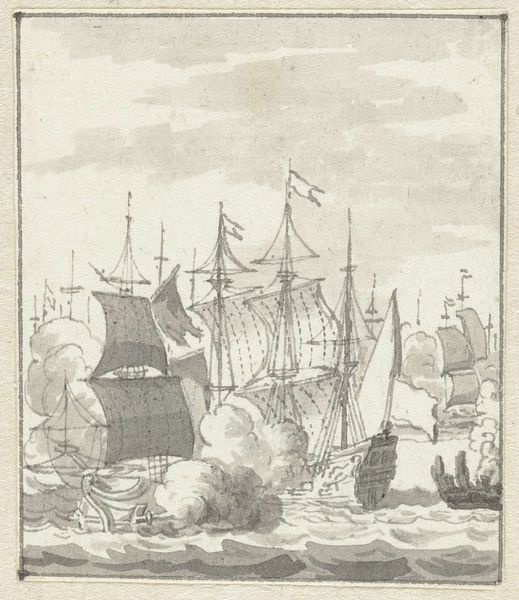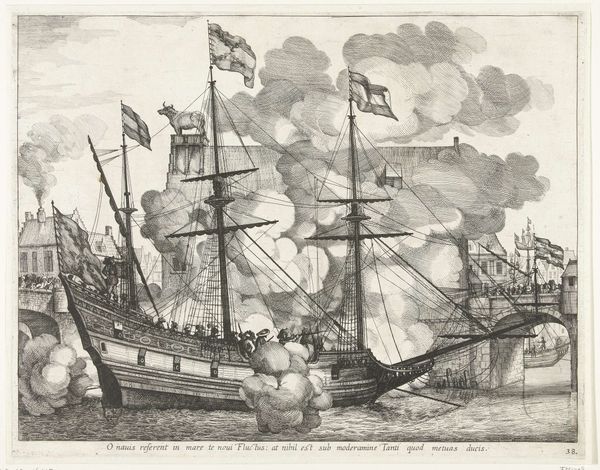
print, etching
#
baroque
# print
#
etching
#
landscape
#
history-painting
Dimensions: height 93 mm, width 175 mm
Copyright: Rijks Museum: Open Domain
Editor: We're looking at "Zeeslag," a print, specifically an etching, made by Wenceslaus Hollar between 1627 and 1636, on display at the Rijksmuseum. The composition, all these ships amidst a fierce battle, feels incredibly dynamic. What stands out to you from a formal perspective? Curator: I'm immediately drawn to the interplay between the chaotic dynamism you observed and the meticulous control evident in the etching technique itself. Note how Hollar uses line variation—the thickness and density—to create depth and texture, differentiating the churning water from the solid mass of the ships. Do you see how the darker, more densely etched lines are concentrated in the foreground, pulling the viewer into the scene? Editor: Yes, it’s like he's using line weight to mimic aerial perspective. And the ships themselves – their sails, rigging, and hulls – are incredibly detailed. Curator: Precisely. Consider how the artist uses the structured, almost mathematical, rendering of the ship architecture as a counterpoint to the swirling, organic lines that define the sea and sky. It is through this dialectic of order and chaos that Hollar constructs a visual tension, effectively conveying the drama and uncertainty of naval warfare. Does the almost monochromatic palette inform the sense of dynamism and tension that is conveyed? Editor: That’s a good point! Limiting the shades to almost monochrome enhances the sense of contrast and the visual impact. Curator: Indeed. This limited palette reinforces the formal structure. Furthermore, reflect on the function of this print. While depicting what may be construed as an historical moment, it also acts as a sophisticated exercise in formal composition, exploring the relationship between line, texture, and tonal value to create a powerful visual experience. Editor: I see it now. Thinking about the formal elements highlights how carefully constructed this seemingly chaotic battle scene is. It is truly a masterful work. Curator: Yes, and focusing on these formal elements also shows that in a powerful work of art, representation always serves form, not the other way around.
Comments
No comments
Be the first to comment and join the conversation on the ultimate creative platform.
